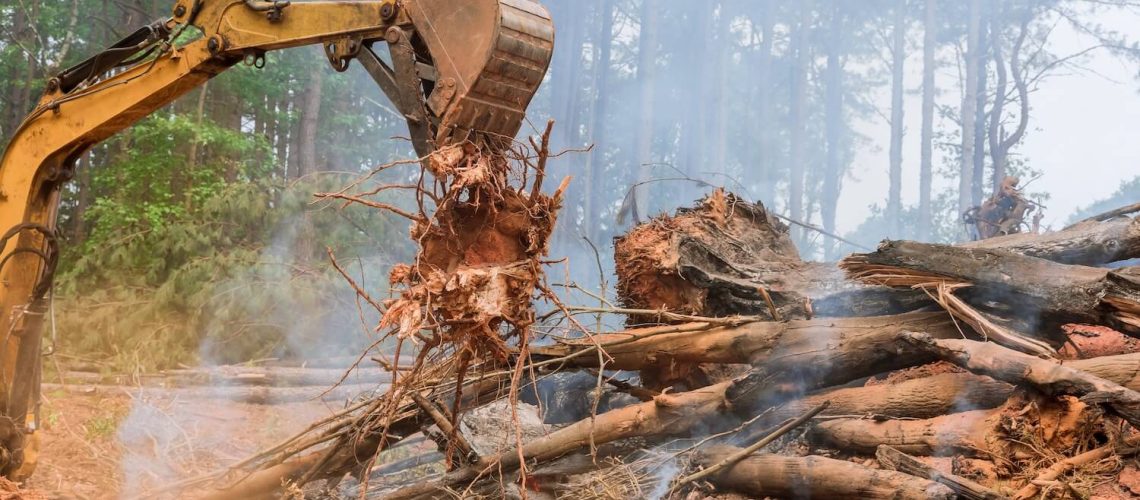Building a home is a dream for many, but the process involves much more than just designing and constructing. One critical phase often overlooked is land preparation. Before the first brick is laid or the foundation poured, thorough land preparation is essential to ensure a sturdy, safe, and sustainable structure.
This article delves into the intricacies of land prep, highlighting its significance and the key steps involved.
Understanding Land Preparation
Land preparation refers to the initial steps taken to ready a piece of land for construction. It involves assessing the site, clearing any obstacles, and making necessary alterations to ensure the land is suitable for building. Neglecting proper land preparation can lead to a host of problems down the line, including unstable foundations, drainage issues, and environmental concerns.
Site Assessment
The first step in land preparation is conducting a thorough site assessment. This involves evaluating various factors such as topography, soil composition, drainage patterns, and environmental considerations. Understanding these aspects is crucial for determining the suitability of the land for construction and identifying any potential challenges that may need to be addressed.
Topography plays a significant role in site assessment, as it impacts the layout and design of the home. Steep slopes, for example, may require additional grading or excavation to create a level building pad. Similarly, areas prone to flooding or poor drainage may need special attention to prevent water damage to the structure.
Soil composition is another critical factor to consider during site assessment. Different types of soil have varying load-bearing capacities, which can affect the stability of the foundation. Soil tests can help determine the soil’s properties and inform decisions regarding foundation design and construction techniques.
Clearing and Demolition
Once the site has been assessed, the next step is clearing any existing structures, vegetation, or debris. This may involve demolishing old buildings, removing trees and shrubs, and clearing away rocks or other obstacles. Clearing the site not only prepares the land for construction but also ensures a safe working environment for construction crews.
Demolition must be carried out carefully to minimize damage to surrounding structures and the environment. Salvaging materials from demolished buildings, such as wood, brick, or metal, can help reduce waste and lower construction costs. Additionally, proper disposal of debris is essential to prevent pollution and comply with environmental regulations.
Grading and Excavation
Grading and excavation are critical steps in land preparation, particularly for sites with uneven terrain or poor drainage. Grading involves reshaping the land to create a level surface for building, while excavation may be necessary for creating foundations, utility trenches, or basement spaces.
During grading, heavy machinery such as bulldozers and graders is used to remove excess soil and redistribute it to achieve the desired slope and contour. Proper grading helps prevent water from pooling around the foundation and ensures proper drainage away from the structure.
Excavation involves digging into the ground to create space for foundations, footings, or underground utilities. Excavators and backhoes are commonly used for this purpose, carefully removing soil while avoiding damage to underground utilities or nearby structures. Excavation must be carried out according to engineering specifications to ensure the stability and integrity of the foundation.
Foundation Prep
The foundation is the backbone of any structure, providing support and stability against natural forces such as wind, water, and soil movement. Proper foundation preparation is essential to ensure the long-term durability and safety of the building.
Before pouring the foundation, the soil must be adequately compacted to prevent settlement or shifting over time. Compaction is typically achieved using heavy machinery such as vibratory rollers or plate compactors, which compress the soil to increase its density and load-bearing capacity.
In areas with expansive or unstable soils, additional measures may be required to reinforce the foundation. This may include installing piers, footings, or other structural supports to mitigate the effects of soil movement and prevent foundation failure.
Utility Installation
Once the foundation is in place, the next step is installing utilities such as water, sewer, electricity, and gas. Utility installation must be carefully planned to ensure proper placement and avoid conflicts with the foundation or other structures.
Water and sewer lines are typically installed underground, using trenching equipment to dig trenches for pipes. Electrical and gas lines may also be buried underground or routed through conduits to the building. Proper installation of utilities is essential to ensure reliable service and compliance with building codes and regulations.
Environmental Considerations
In addition to the practical aspects of land preparation, it’s crucial to consider the environmental impact of construction activities. Clearing vegetation and disturbing the soil can have adverse effects on local ecosystems and water quality if not properly managed.
Sediment control measures such as silt fences, erosion blankets, and sediment basins can help prevent soil erosion and protect nearby water bodies from sedimentation. Proper erosion control is essential during construction and until vegetation is established to stabilize the soil.
Additionally, measures should be taken to minimize disruption to wildlife habitat and preserve natural features such as wetlands, streams, and forests. Incorporating sustainable design practices such as green building materials, energy-efficient systems, and stormwater management techniques can further reduce the environmental footprint of construction.
How Boulder Ridge Construction Can Assist with Land Preparation and New Home Foundation Construction
Boulder Ridge Construction is a reputable construction company known for its expertise in land preparation and new home foundation construction. With a commitment to quality, safety, and customer satisfaction, Boulder Ridge Construction offers comprehensive services to ensure that every aspect of the land preparation process is handled with precision and care.
Site Assessment
Boulder Ridge Construction begins by conducting a thorough site assessment to evaluate the characteristics of the land and identify any potential challenges or opportunities. Using advanced surveying techniques and geotechnical analysis, their team of experts assesses factors such as topography, soil composition, drainage patterns, and environmental considerations.
By gaining a deep understanding of the site’s unique features, Boulder Ridge Construction can develop a customized plan tailored to the specific needs of the project. This allows them to anticipate potential issues and implement effective solutions, ultimately saving time and minimizing costly delays during construction.
Clearing and Demolition
Once the site assessment is complete, Boulder Ridge Construction moves forward with clearing any existing structures, vegetation, or debris. Their skilled demolition crews carefully dismantle old buildings, remove trees and shrubs, and clear away rocks and debris to prepare the land for construction.
Boulder Ridge Construction prioritizes safety and environmental stewardship during the clearing process, taking care to minimize disruption to the surrounding ecosystem. By salvaging materials for recycling and proper disposal of debris, they ensure that the site is clean, safe, and ready for the next phase of construction.
Grading and Excavation
With the site cleared, Boulder Ridge Construction utilizes state-of-the-art equipment and techniques to grade the land and prepare it for the foundation. Their team of experienced operators carefully sculpt the terrain to create a level building pad, addressing any slope or drainage issues as needed.
Excavation is carried out with precision, ensuring that the soil is properly compacted and graded to support the weight of the foundation and structure above. Boulder Ridge Construction follows industry best practices and adheres to engineering specifications to ensure the stability and integrity of the foundation.
Foundation Construction
As experts in foundation construction, Boulder Ridge Construction offers a range of options to suit the needs of each project. Whether it’s a slab-on-grade, crawl space, or basement foundation, their skilled craftsmen employ the latest techniques and materials to ensure a solid and durable foundation.
From excavation and formwork to reinforcement and concrete pouring, Boulder Ridge Construction manages every aspect of the foundation construction process with meticulous attention to detail. Their commitment to quality craftsmanship and adherence to strict building codes and standards ensure that the foundation is built to last for generations to come.
Customer Satisfaction
Throughout the land preparation and foundation construction process, Boulder Ridge Construction prioritizes open communication and collaboration with clients. They work closely with homeowners, architects, engineers, and other stakeholders to ensure that the project meets their vision, budget, and timeline.
Boulder Ridge Construction’s dedication to customer satisfaction extends beyond the completion of the project. They stand behind their work with comprehensive warranties and ongoing support to address any concerns or issues that may arise after construction.
Conclusion
Land preparation is a critical yet often overlooked aspect of home construction. By carefully assessing the site, clearing obstacles, grading the land, preparing the foundation, installing utilities, and considering environmental concerns, builders can ensure a solid foundation for a safe, sustainable, and long-lasting home. Investing time and resources in proper land preparation pays off in the form of reduced maintenance costs, improved structural integrity, and minimized environmental impact, making it an essential step in the construction process.

